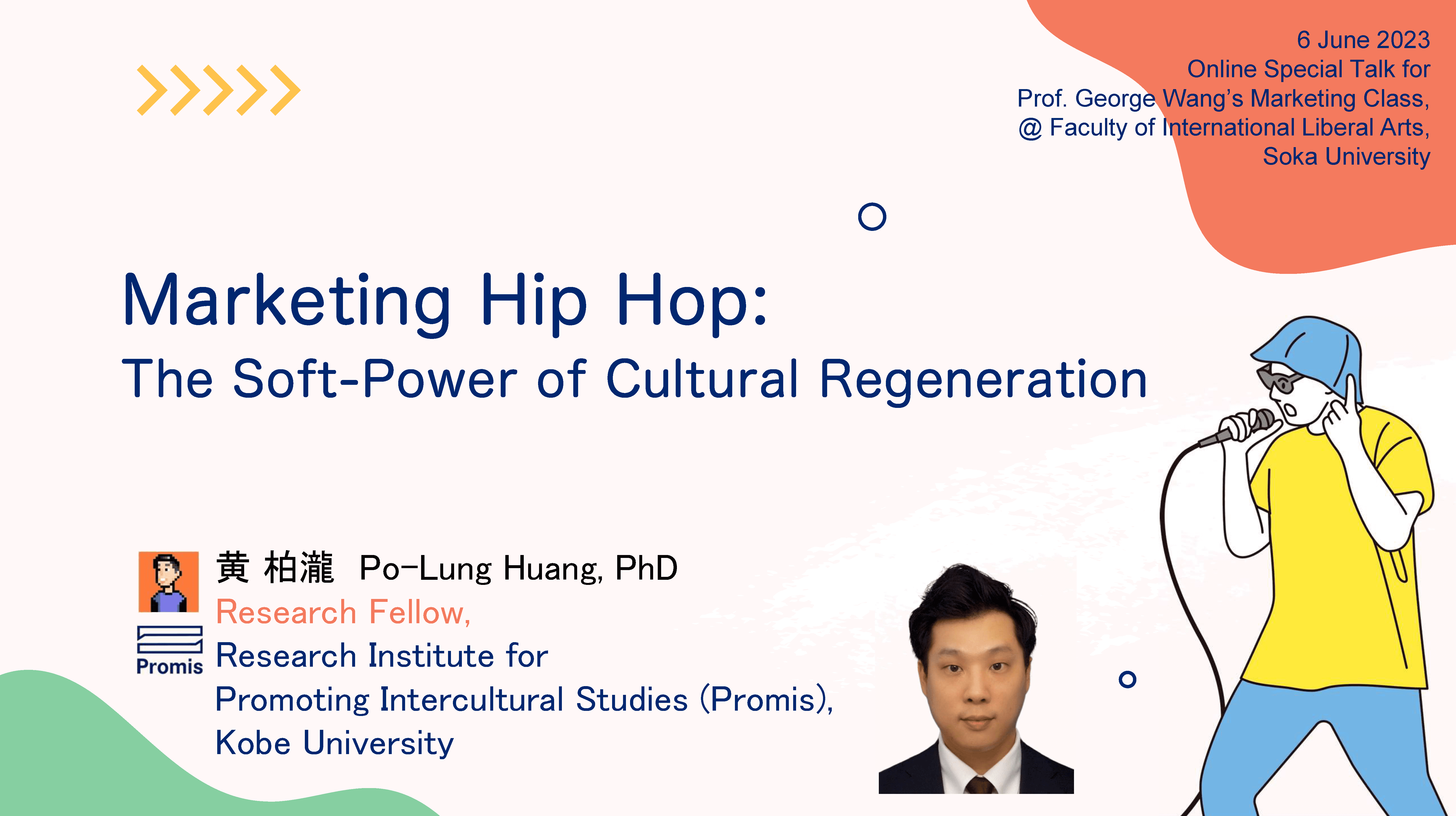- Faculty of International Liberal Arts Top Page
- Faculty of International Liberal Arts NEWS
- 【FILA】"Marketing Hip Hop" by Guest speaker #2

2023/06/28 12:00
【FILA】"Marketing Hip Hop" by Guest speaker #2
Following #1:
Huang, an expert in sociology, cultural studies, and media studies, began his speech by delving into the formation and diffusion of hip-hop culture. Originating from the convergence of various art movements in the South Bronx of New York City in the 1970s, hip-hop culture emerged as a response to racial discrimination, class issues, and poverty faced by black youths and minority groups. The culture encompassed four key elements: MC (Rap), DJ (musical performance), breakdancing (street dance), and graffiti (representing hip-hop rhythms).
Highlighting the significance of hip hop's creative regeneration, Huang emphasized the use of the "call and response" structure, which allowed for the amplification of cultural expressions through repeated interactions. This structure facilitated the generation of a shareable hip-hop philosophy, transcending music and branching into other cultural domains.
Huang further explored how hip-hop culture has diffused globally, specifically in East Asian contexts. He drew attention to the synchronization of Kung-fu and street dance in rap music and videos, demonstrating the hybrid nature of hip hop culture.
The speech then shifted focus to the influence of hip-hop culture in the fashion industry, particularly its appropriation by luxury brands. This collaboration exemplified the growing acceptance of hip-hop culture by luxury brands, allowing for the renovation of marketing strategies and the attraction of new customers.
While acknowledging the power of hip-hop appropriation as a marketing strategy, Huang emphasized the importance of two-way regenerations between hip-hop expressions and the product or company image. Appropriation should lead to creative outcomes, reviving brands, and updating their cultural expressions.

